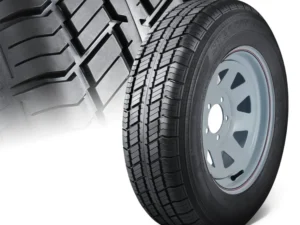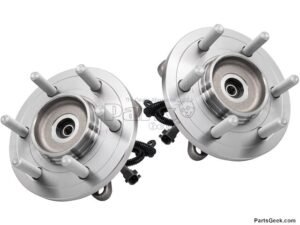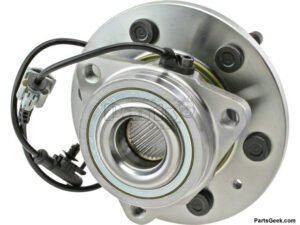Description
Introduction to 15-Inch Trailer Tires
15-inch trailer tires play a crucial role in the world of towing and transport, serving as the foundation for a wide array of trailers. These tires are particularly popular due to their balance between size, load capacity, and maneuverability. They are commonly used on utility trailers, boat trailers, travel trailers, and even some smaller commercial trailers. The versatility of 15-inch trailer tires makes them a preferred choice for various applications, providing a reliable solution for both recreational and professional use.
The specifications of 15-inch trailer tires are designed to meet the demands of different towing requirements. Typically, these tires feature a robust construction that can withstand higher loads, making them suitable for hauling heavy equipment or recreational vehicles. The load range, which indicates the maximum weight the tires can safely carry, varies across different tire models, ensuring there is a suitable option for every trailer type. Additionally, the tread design of 15-inch trailer tires is optimized for stability and traction, which is essential for maintaining control, especially during adverse weather conditions or on uneven terrain.
Another key aspect of 15-inch trailer tires is their compatibility with various trailer axles and suspension systems. This compatibility ensures that they can be easily mounted and provide smooth performance, reducing the risk of wear and tear on both the tires and the trailer. The popularity of 15-inch trailer tires is also attributed to their availability in different ply ratings, which refer to the strength of the tire’s internal construction. Higher ply ratings mean greater durability and resistance to punctures, making these tires a reliable choice for long-distance travel and heavy-duty use.
Overall, 15-inch trailer tires offer a blend of durability, load capacity, and versatility, making them an essential component for many types of trailers. Their design and specifications cater to a wide range of towing needs, ensuring that users can find the right tire to match their specific requirements. Whether for recreational purposes or commercial applications, 15-inch trailer tires continue to be a popular and dependable choice in the market.
Key Features and Benefits
15-inch trailer tires are engineered to meet the specific demands of varying load capacities and road conditions. One of the most prominent features of these tires is their exceptional durability. Constructed with robust materials, they can withstand the rigors of long-distance hauling and adverse weather conditions. This durability translates to a longer lifespan, reducing the frequency of replacements and the associated costs.
Another notable feature is their impressive load capacity. 15-inch trailer tires are built to support heavy loads, making them ideal for transporting substantial cargo. This high load capacity ensures that the tires maintain their structural integrity even under significant weight, contributing to a safer and more efficient towing experience.
Design elements such as tread patterns and sidewall construction play a crucial role in the overall performance of 15-inch trailer tires. Advanced tread designs enhance traction, providing better grip on both wet and dry surfaces. This improved traction is particularly beneficial in preventing slippage and ensuring stability during transit. Additionally, reinforced sidewalls offer extra protection against punctures and abrasions, further enhancing the tire’s longevity.
The benefits of these features are multifaceted. Enhanced stability is one of the primary advantages, as it minimizes the risk of trailer sway and improves handling. Better traction contributes to safety by reducing stopping distances and enhancing control, especially in challenging driving conditions. Moreover, the improved fuel efficiency is an often-overlooked benefit. The optimized design of 15-inch trailer tires reduces rolling resistance, which in turn, leads to lower fuel consumption.
Real-world testimonials underscore these advantages. For instance, John, a frequent RV traveler, noted a significant improvement in stability and fuel efficiency after upgrading to 15-inch trailer tires. Similarly, a commercial transporter named Sarah highlighted the enhanced load capacity and durability, which allowed her to transport heavier goods without frequent tire replacements.
Types of 15-Inch Trailer Tires
When selecting 15-inch trailer tires, one of the primary considerations is the type of tire that best suits your specific needs. The two main categories of 15-inch trailer tires are radial and bias-ply tires, each with distinct characteristics, advantages, and disadvantages. Understanding these differences can help you make an informed decision.
Radial Tires
Radial tires are constructed with steel belts running at a 90-degree angle to the tread line, providing increased flexibility and strength. These tires are known for their smoother ride and longer tread life. Additionally, radial tires offer better heat dissipation, which is crucial for long-distance towing as it reduces the risk of blowouts. They also provide improved traction and stability, making them an excellent choice for highway driving and long trips.
However, radial tires tend to be more expensive than bias-ply tires. They are also somewhat less durable on rough terrains, making them less ideal for off-road conditions. Radial tires are highly recommended for those who frequently undertake long-distance travel and prioritize comfort and tire longevity.
Bias-Ply Tires
Bias-ply tires, on the other hand, are constructed with multiple layers of rubber-coated fabric placed at an angle to the tread line. This design results in a stiffer sidewall and a more rugged tire overall. Bias-ply tires are often preferred for their durability and resistance to damage, particularly in off-road or challenging terrains. They are typically more affordable than radial tires, which can be a significant factor for budget-conscious buyers.
Despite their advantages, bias-ply tires generally have a shorter tread life and provide a rougher ride compared to radial tires. Their heat dissipation capability is also inferior, which might increase the likelihood of blowouts during long-distance towing. Bias-ply tires are best suited for short trips, heavy loads, and off-road conditions where durability is a priority.
In conclusion, choosing between radial and bias-ply 15-inch trailer tires largely depends on your specific towing needs. For long-distance and highway travel, radial tires offer superior performance and comfort. Conversely, if you’re dealing with rough terrains and shorter distances, bias-ply tires can be a more durable and cost-effective option.
How to Choose the Right 15-Inch Trailer Tire
Choosing the right 15-inch trailer tire involves several key considerations to ensure optimal performance and safety. The first step is to understand the load rating of the tire. Each tire has a specific load rating that indicates the maximum weight it can safely carry. It is crucial to select a tire with a load rating that matches or exceeds the weight of your trailer and its cargo. Overloading a tire can lead to premature wear and potential failure.
Another important factor is the type of terrain you will be traversing. Different tires are designed for various terrains, such as highways, off-road conditions, or mixed-use environments. For example, if you frequently travel on rough or unpaved surfaces, a tire with a robust tread pattern and reinforced sidewalls would be more suitable. Conversely, for highway use, a tire with a smoother tread pattern designed for lower rolling resistance might be ideal.
Weather conditions also play a significant role in tire selection. If you operate your trailer in an area with extreme temperatures or frequent precipitation, consider tires that are rated for all-weather or specific seasonal conditions. Some tires are designed with compounds that perform better in cold or hot climates, while others have treads optimized for wet or dry conditions.
Budget is another critical aspect to consider. While it might be tempting to opt for the cheapest option, it’s essential to balance cost with quality. High-quality trailer tires typically offer better durability, safety features, and longer tread life, which can be more cost-effective in the long run.
Finally, learning how to read tire specifications can greatly aid in making an informed decision. Look for information such as the tire’s size, load rating, speed rating, and manufacturing date. Quality trailer tires often come with warranties, which can be an indicator of the manufacturer’s confidence in their product.
By considering these factors—load rating, terrain, weather conditions, and budget—you can confidently select the right 15-inch trailer tire to meet your needs. Always prioritize safety and quality to ensure a smooth and trouble-free towing experience.
Installation and Maintenance
Proper installation and maintenance of 15-inch trailer tires are crucial for ensuring safety and longevity. This section provides a comprehensive guide on how to install and maintain these tires effectively.
Installation
First, gather the necessary tools: a jack, lug wrench, torque wrench, and a tire pressure gauge. Begin by parking your trailer on a level surface and engaging the parking brake. Use the jack to lift the trailer until the tire is off the ground, ensuring the jack is placed under a solid part of the trailer’s frame.
Next, use the lug wrench to loosen the lug nuts on the wheel. Remove the old tire and place the new 15-inch trailer tire onto the wheel hub, aligning the holes with the studs. Hand-tighten the lug nuts to hold the tire in place. Lower the trailer using the jack and finish tightening the lug nuts with the torque wrench, following the manufacturer’s recommended torque specifications.
Maintenance
Regular maintenance is key to extending the life of your 15-inch trailer tires. Start by checking the tire pressure frequently, especially before long trips. Use a tire pressure gauge to ensure the pressure matches the manufacturer’s recommendations, typically found on the tire sidewall or the trailer’s manual.
Tire rotation is another essential maintenance practice. Rotating your trailer tires helps to ensure even wear, extending their lifespan. It’s advisable to rotate the tires every 5,000 to 7,000 miles or as recommended by the manufacturer.
Additionally, inspect your tires for signs of wear and tear. Look for uneven tread wear, cracks, or bulges, which may indicate underlying issues. If you notice any irregularities, it’s best to consult a professional to determine if a replacement is necessary.
By following these installation and maintenance guidelines, you can ensure that your 15-inch trailer tires remain in optimal condition, providing safe and reliable performance for all your towing needs.
Common Issues and Troubleshooting
When it comes to 15-inch trailer tires, several common issues can arise, affecting performance and safety. One frequently encountered problem is blowouts. Blowouts typically occur due to overloading, underinflation, or hitting road hazards. To prevent this, regularly check the tire pressure and ensure it matches the manufacturer’s specifications. Additionally, avoid exceeding the load capacity of the trailer and inspect tires for any visible damage or wear before embarking on a trip.
Uneven tire wear is another prevalent issue, often caused by improper tire alignment or unbalanced loads. To troubleshoot this, first, inspect the tires for any irregular wear patterns. If you notice uneven wear, it is essential to check the alignment and balance of the trailer. Proper alignment ensures that all tires make consistent contact with the road, reducing the risk of uneven wear. Balancing the load across the trailer axles will also help in maintaining even wear on the tires. Rotating the tires periodically can further extend their lifespan.
Alignment issues can also lead to handling problems and reduced tire life. If the trailer pulls to one side or the tires appear to wear more on one edge than the other, it is a sign that the alignment needs adjustment. While basic alignment checks can be performed at home, such as measuring the distance between the tires and the trailer frame, more intricate alignment issues should be addressed by a professional. Proper alignment not only enhances tire longevity but also improves fuel efficiency and overall trailer stability.
In some cases, DIY troubleshooting may suffice, such as checking tire pressure, inspecting for visible damage, and rotating tires. However, for more complex issues like severe blowouts, significant uneven wear, or persistent alignment problems, seeking professional assistance is advisable. Professionals have the necessary tools and expertise to diagnose and resolve issues accurately, ensuring the safety and reliability of your 15-inch trailer tires.
Top Brands and Recommendations
When it comes to selecting 15-inch trailer tires, several top brands stand out for their quality, reliability, and customer satisfaction. Among these, Goodyear, Carlisle, and Maxxis are often cited as leading manufacturers. Each brand offers a range of products catering to various needs and budgets, making it easier for consumers to find the perfect fit for their trailers.
Goodyear is renowned for its durable and high-performing trailer tires. The Goodyear Endurance line, in particular, offers exceptional tread life and robust construction, making it ideal for long-haul journeys and heavy-duty use. Although Goodyear tires are typically on the higher end of the price spectrum, the investment is justified by their longevity and superior performance.
Carlisle is another reputable brand known for its versatile and cost-effective tire options. The Carlisle Radial Trail HD series is highly praised for its balanced performance and affordability. These tires are designed to handle a variety of road conditions, providing a smooth and stable ride. For those on a tighter budget but unwilling to compromise on quality, Carlisle presents a compelling choice.
Maxxis offers a selection of 15-inch trailer tires that are particularly lauded for their resilience and safety features. The Maxxis M8008 ST Radial is a popular model that combines strength with enhanced traction, making it suitable for both short trips and extensive travels. Maxxis tires are moderately priced, striking a balance between cost and performance.
For those seeking premium quality and willing to pay a premium price, Goodyear is the go-to brand. If affordability without sacrificing too much on quality is the priority, Carlisle’s offerings are worth considering. Meanwhile, Maxxis serves as an excellent middle-ground, offering reliable performance at a reasonable cost. By understanding the strengths and price points of these top brands, consumers can make informed decisions tailored to their specific needs and budgets.
FAQs and Expert Tips
When it comes to 15-inch trailer tires, several questions frequently arise. Below, we address these queries and provide expert tips to help you maximize the lifespan and performance of your trailer tires.
1. How often should I check the tire pressure?
Maintaining the correct tire pressure is crucial for both safety and longevity. It is recommended to check the tire pressure at least once a month and before any long trips. Use a reliable tire pressure gauge and ensure the tires are inflated to the manufacturer’s specified PSI.
2. What is the recommended tread depth for 15-inch trailer tires?
The tread depth should be monitored regularly. A minimum tread depth of 1/16 inch is essential for safe driving. Using a tread depth gauge can help you measure this accurately. If the tread is below this threshold, it’s time to replace the tire.
3. How can I prevent uneven tire wear?
Uneven tire wear can be prevented through regular rotation, alignment, and balancing. Rotating your 15-inch trailer tires every 5,000 to 7,000 miles helps ensure even wear. Additionally, wheel alignment and balancing should be checked annually or whenever you notice uneven wear patterns.
4. What are the signs that my trailer tires need replacement?
Indicators that your trailer tires need replacement include cracks on the sidewalls, bulges, or visible damage. If you notice any of these signs, it’s crucial to replace the tires immediately to avoid potential hazards.
5. Are there any specific storage tips for 15-inch trailer tires?
Proper storage significantly extends the lifespan of trailer tires. Store them in a cool, dry place away from direct sunlight and extreme temperatures. If possible, elevate the tires off the ground to reduce the risk of flat spots. Covering the tires also helps protect them from UV damage.
Expert Tips:
To maximize the lifespan and performance of your 15-inch trailer tires, adhere to the following expert tips:
- Regularly inspect your tires for any signs of damage or wear.
- Use a tire pressure monitoring system (TPMS) for continuous pressure tracking.
- Ensure that your trailer is not overloaded, as excessive weight can accelerate tire wear.
- Consider using tire covers when the trailer is parked for extended periods.
By following these guidelines and addressing any concerns promptly, you can ensure your 15-inch trailer tires perform optimally and last longer.






Reviews
There are no reviews yet.